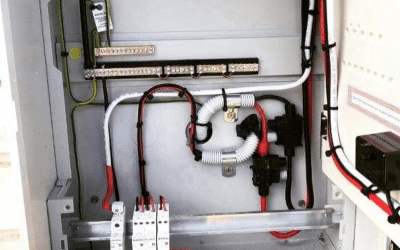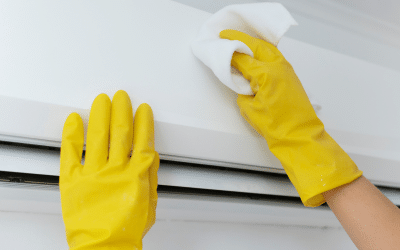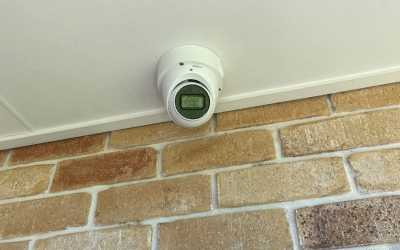In the contemporary workspace, the home office has become a mainstay for professionals across the globe. With this shift towards remote working, the importance of energy efficiency within these personal workspaces cannot be overstated. Achieving energy efficiency in your home office serves a dual purpose: it significantly reduces your environmental footprint, contributes positively to the global effort against climate change, and it offers a practical advantage by lowering utility bills, making it an economically savvy choice.
The pursuit of energy efficiency in home offices is not just about embracing sustainability; it’s also about harnessing the potential for cost savings without compromising on productivity or comfort. By adopting energy-saving measures, individuals can create a workspace that is not only environmentally responsible but also financially beneficial. This introduction to energy-saving tips for your home office will explore various strategies to enhance your workspace’s efficiency, highlighting the seamless integration of sustainability into your daily work life, contributing to a healthier planet, and fostering a more cost-effective work environment.
Understanding Energy Consumption in Your Home Office
Understanding the nuances of energy consumption within your home office is pivotal for implementing effective energy-saving strategies. The common sources of energy consumption often stem from everyday office equipment and electronics, lighting, heating, and cooling systems. Each component, while essential for a productive work environment, contributes to the overall energy footprint of your home office.
Small changes in how we use and choose our office equipment can cumulatively lead to significant savings in energy costs and reduce environmental impact. For instance, optimising the use of natural light, turning off equipment when not in use, and regulating the office temperature with smart thermostats can substantially decrease energy consumption without sacrificing comfort or efficiency.
The Role of Home Office Equipment
Office equipment such as computers, printers, monitors, and networking devices are the backbone of a functional home office, yet they are also the primary contributors to its energy consumption. Understanding the energy demand of these devices is the first step in managing and reducing their impact.
- Computers and Monitors: Modern computers and monitors vary widely in their energy efficiency. Opting for laptops over desktops can save a considerable amount of energy, as laptops are designed for efficiency to conserve battery power. Additionally, LED monitors consume significantly less energy compared to their older LCD counterparts.
- Printers: Inkjet printers generally use less energy than laser printers. However, the overall energy consumption can also depend on usage patterns. Utilising the sleep mode feature on printers and multifunction devices can greatly reduce energy use during idle periods.
- Networking Devices: Routers and modems are often overlooked as they run continuously. Choosing models that have energy-saving features can contribute to lower energy use.
- Lighting: The choice of lighting in your home office also plays a crucial role. LED bulbs are highly recommended for their lower energy consumption and longer lifespan compared to traditional incandescent bulbs.
When selecting equipment for your home office, look for products with energy efficiency certifications like ENERGY STAR. These models are designed to meet strict energy efficiency guidelines set by environmental agencies, offering significant energy savings without compromising performance. Additionally, implementing smart power strips can help manage energy use by shutting off power to devices that are not in use, preventing phantom energy loss.
Incorporating these energy-efficient models and practices into your home office setup not only contributes to a greener planet but also leads to noticeable reductions in energy bills, making it a win-win scenario for both the environment and your wallet.
Practical Energy-Saving Tips for Your Home Office
Optimising Natural Light and Ventilation
Harnessing natural light not only illuminates your home office more efficiently but also enhances your workspace’s aesthetic and your overall well-being. Positioning your desk to take advantage of daylight reduces the reliance on artificial lighting during the day. Additionally, effective ventilation can significantly decrease the need for air conditioning, which is often a major energy consumer. Opening windows to create a cross-breeze or using ceiling fans can help maintain a comfortable working environment naturally, reducing energy consumption and costs.
Energy-Efficient Lighting Solutions
Switching to LED (Light Emitting Diode) or CFL (Compact Fluorescent Lamp) bulbs from traditional incandescent bulbs is a straightforward yet effective step towards energy efficiency. LEDs and CFLs consume up to 75% less energy and last up to 25 times longer. Incorporating smart lighting solutions, such as motion sensors that automatically turn off lights when no movement is detected, and dimmers that adjust light intensity according to your needs, further optimises energy use, ensuring that electricity is not wasted.
Smart Power Management for Electronics
Smart power strips and smart plugs play a crucial role in managing the energy consumption of electronics in your home office. These devices can automatically cut power to equipment in standby mode, eliminating phantom loads contributing to unnecessary energy use. Additionally, setting your computers and monitors to enter sleep or energy-saving modes after periods of inactivity can significantly reduce energy consumption without disrupting your work process.
Efficient Heating and Cooling Practices
Effective insulation and weather stripping are essential for maintaining a comfortable temperature in your home office, minimising the need for constant heating or cooling. These practices prevent the loss of heated or cooled air, making energy consumption more efficient. When using heating and cooling systems, opting for energy-efficient models and regular maintenance ensures optimal performance and energy usage. Programmable thermostats can also adjust temperatures according to your schedule, reducing energy waste.
Furniture and Layout for Energy Efficiency
The strategic placement of furniture and thoughtful office layout can also contribute to energy savings. For instance, a desk placed near a window maximises natural light, while the right window treatments can reduce heat gain during summer and heat loss during winter. Additionally, choosing furniture that does not obstruct air flow enhances ventilation, reducing the need for mechanical heating and cooling. The layout should facilitate the natural flow of light and air, creating an environment that is both comfortable and energy-efficient.
Adopting these practical energy-saving tips can significantly lower energy bills and reduce environmental impact, creating a sustainable and cost-effective home office.
Advanced Energy-Saving Strategies
Investing in Energy-Efficient Appliances
The decision to invest in energy-efficient appliances for your home office is a commitment to both environmental stewardship and financial savings over the long term. Appliances that have earned the ENERGY STAR rating are certified to use less energy compared to standard models, without sacrificing performance. These appliances can significantly reduce your home office’s energy consumption, leading to substantial savings on utility bills and a reduction in your carbon footprint.
For home offices, energy-efficient examples include printers, computers, and monitors that consume less power and have a lower standby energy consumption. ENERGY STAR-rated air conditioners and space heaters also offer a more efficient way to control the climate of your home office. By prioritising energy efficiency when purchasing new appliances, you not only enjoy the immediate benefits of reduced energy use but also contribute to a larger impact on environmental conservation over time.
Renewable Energy Options for Home Offices
Integrating renewable energy sources, such as solar panels, into your home office setup presents an innovative approach to achieving sustainability and energy independence. Solar energy, in particular, offers a viable and increasingly accessible option for powering your home office. The initial investment in solar panels can be offset by long-term savings on electricity bills and potential government incentives and rebates designed to encourage renewable energy adoption.
Transitioning to renewable energy not only diminishes your reliance on fossil fuels but also aligns with a global movement towards sustainable living practices. The feasibility of this transition has been greatly enhanced by technological advancements and reduced costs of renewable energy systems. Home offices powered by renewable sources like solar energy benefit from a consistent, eco-friendly power supply that can significantly reduce operating costs and contribute to a greener planet.
Exploring renewable energy options for your home office not only showcases a commitment to sustainability but also positions you as a forward-thinking professional, leveraging the latest advancements in energy technology for a more efficient and environmentally friendly workspace.
Addressing Common Questions on Energy Savings
Making Your Home Office More Energy-Efficient
To enhance the energy efficiency of your home office, start with a comprehensive audit of your current energy use. Identify energy-consuming appliances and consider their necessity and efficiency. Implementing foundational steps such as utilising natural light, improving insulation, and ventilating naturally can significantly reduce reliance on artificial lighting and HVAC systems. Upgrading to energy-efficient lighting and office equipment further decreases energy consumption. Additionally, adopting habits like turning off equipment when not in use and utilising smart power management tools can make a substantial impact. These initial steps lay the groundwork for a more sustainable, energy-efficient home office.
Best Practices for Home Office Equipment
Managing and reducing the energy consumption of office equipment involves several best practices. First, invest in ENERGY STAR-rated devices, known for their energy efficiency. Use power management settings on computers and monitors, enabling automatic transition to sleep mode during inactivity. Employ smart power strips to cut off power to equipment not in use, addressing phantom loads. Regular maintenance of equipment ensures optimal performance and energy use. Lastly, consider the necessity of each device, as consolidating tasks to reduce the number of devices active can lead to significant energy savings.
The Impact of Light Bulb Replacement
Switching to energy-saving light bulbs, such as LEDs or CFLs, is a straightforward yet impactful action. These bulbs use significantly less energy compared to traditional incandescent bulbs and have a longer lifespan, reducing both energy consumption and the frequency of replacements. The transition to energy-efficient lighting not only contributes to lower utility bills but also reduces the environmental impact associated with energy production and bulb disposal. This simple switch is a practical step towards a more sustainable and cost-effective home office.
The Importance of Insulation
Proper insulation plays a critical role in maintaining energy efficiency in your home office. Good insulation minimises the transfer of heat, keeping your office cooler in summer and warmer in winter, thereby reducing the need for heating and cooling. This not only leads to a more comfortable working environment but also significantly cuts down on energy consumption and costs. Investing in quality insulation, along with sealing leaks and drafts around windows and doors, ensures that your energy efforts are not undermined by avoidable heat loss or gain.
Energy-Efficient Appliances and Their Impact
Energy-efficient appliances, designated by the ENERGY STAR rating, are engineered to use minimum energy for their operation without compromising on performance. Incorporating these appliances into your home office setup can lead to substantial reductions in energy consumption. This not only translates into lower utility bills but also contributes to a reduction in the overall energy demand, thereby decreasing the environmental impact associated with power generation. The cumulative effect of choosing energy-efficient appliances extends beyond immediate savings, supporting broader environmental goals of reducing carbon emissions and conserving resources.
Key Takeaways
The journey towards creating a sustainable home office is paved with numerous energy-saving opportunities that can lead to significant environmental and financial benefits. Key takeaways from our discussion highlight the importance of making conscious choices and implementing practical strategies to enhance energy efficiency.
- Optimise Natural Light and Ventilation: Leveraging natural light and effective ventilation reduces reliance on artificial lighting and air conditioning, offering immediate energy savings and a healthier workspace environment.
- Switch to Energy-Efficient Lighting: Replacing traditional incandescent bulbs with LED or CFL bulbs significantly cuts energy consumption and costs, while providing durable and effective lighting solutions for your home office.
- Smart Power Management: Utilising smart power strips and enabling energy-saving settings on electronics can prevent unnecessary energy waste, ensuring that devices only consume power when in use.
- Invest in Energy-Efficient Appliances and Equipment: Choosing ENERGY STAR-rated office equipment and appliances ensures lower energy use without compromising functionality, contributing to long-term savings and sustainability.
- Renewable Energy Sources: Exploring renewable energy options, such as solar panels, can dramatically reduce your carbon footprint and foster energy independence, aligning your home office with global sustainability goals.
- Efficient Heating and Cooling Practices: Implementing proper insulation and weatherproofing measures, along with choosing energy-efficient heating and cooling systems, maintains a comfortable office environment and minimises energy expenditure.
- Furniture and Layout Considerations: A thoughtful office design that maximises natural light and promotes effective airflow can enhance energy efficiency, reducing the need for additional lighting and temperature control measures.
Making conscious choices to incorporate these energy-saving tips not only fosters a more sustainable and eco-friendly home office but also highlights the broader impact of individual actions on global environmental efforts. By prioritising energy efficiency, we contribute to a healthier planet, achieve significant cost savings, and create a more productive and comfortable workspace. Embracing these practices demonstrates a commitment to a sustainable future, where every small action can lead to substantial positive change.
Conclusion
As we refine our home offices for greater energy efficiency, it’s crucial to acknowledge the dual impact of our choices on environmental sustainability and economic savings. Each action towards energy conservation, however minor, plays a part in a broader initiative against climate change, safeguarding our planet for future generations.
Embracing energy-saving measures is more than a personal commitment to environmental care; it’s an investment in a cost-effective, efficient workspace. Implementing the strategies outlined not only lowers your carbon footprint but also serves as a model for conscientious energy usage beyond your home office.
Let’s allow our exploration of energy efficiency to inspire actionable change. Our daily choices hold the power to effect real transformation. By optimizing our home offices for sustainability, we contribute today to a healthier world tomorrow. Committing to these principles offers lasting benefits, fostering environmental preservation and financial wisdom. In undertaking this journey, we join a collective effort towards a future that harmonises ecological integrity with economic health.
FAQ’s
What are some effective energy-saving tips for my home office?
To save energy in your home office, consider implementing these strategies: use energy-efficient LED lighting, invest in ENERGY STAR® rated office equipment, utilise smart power strips to avoid phantom load, and maximise natural light during the day. Adjusting your computer and monitor settings to energy-saving modes can significantly reduce power consumption.
What steps can I take to reduce electricity usage in my office?
To reduce electricity in your office, ensure that all electronic devices are turned off or in sleep mode when not in use. Upgrade to energy-efficient lighting and appliances, and implement a policy for energy-saving practices among staff. Regular maintenance of HVAC systems and proper insulation can also lead to significant energy savings.
How can I lower my home's power consumption?
Lowering your home’s power consumption can be achieved by upgrading to energy-efficient appliances, sealing leaks and drafts, using programmable thermostats, and being mindful of your daily energy usage habits. Additionally, consider investing in renewable energy sources like solar panels to decrease reliance on the grid.
What is the impact of office equipment efficiency ratings on energy consumption?
Efficiency ratings, such as ENERGY STAR, indicate how well office equipment uses electricity. Devices with high-efficiency ratings consume less energy, leading to lower electricity bills and reduced environmental impact. Prioritising equipment with these ratings for your home office can significantly cut down on energy consumption.
How effective are energy management systems for home offices?
Energy management systems (EMS) can be highly effective for home offices. These systems monitor, control, and optimise the electrical and heating or cooling system performance. By providing real-time data and enabling automated control over home office energy use, EMS can lead to substantial energy savings and operational efficiency.







